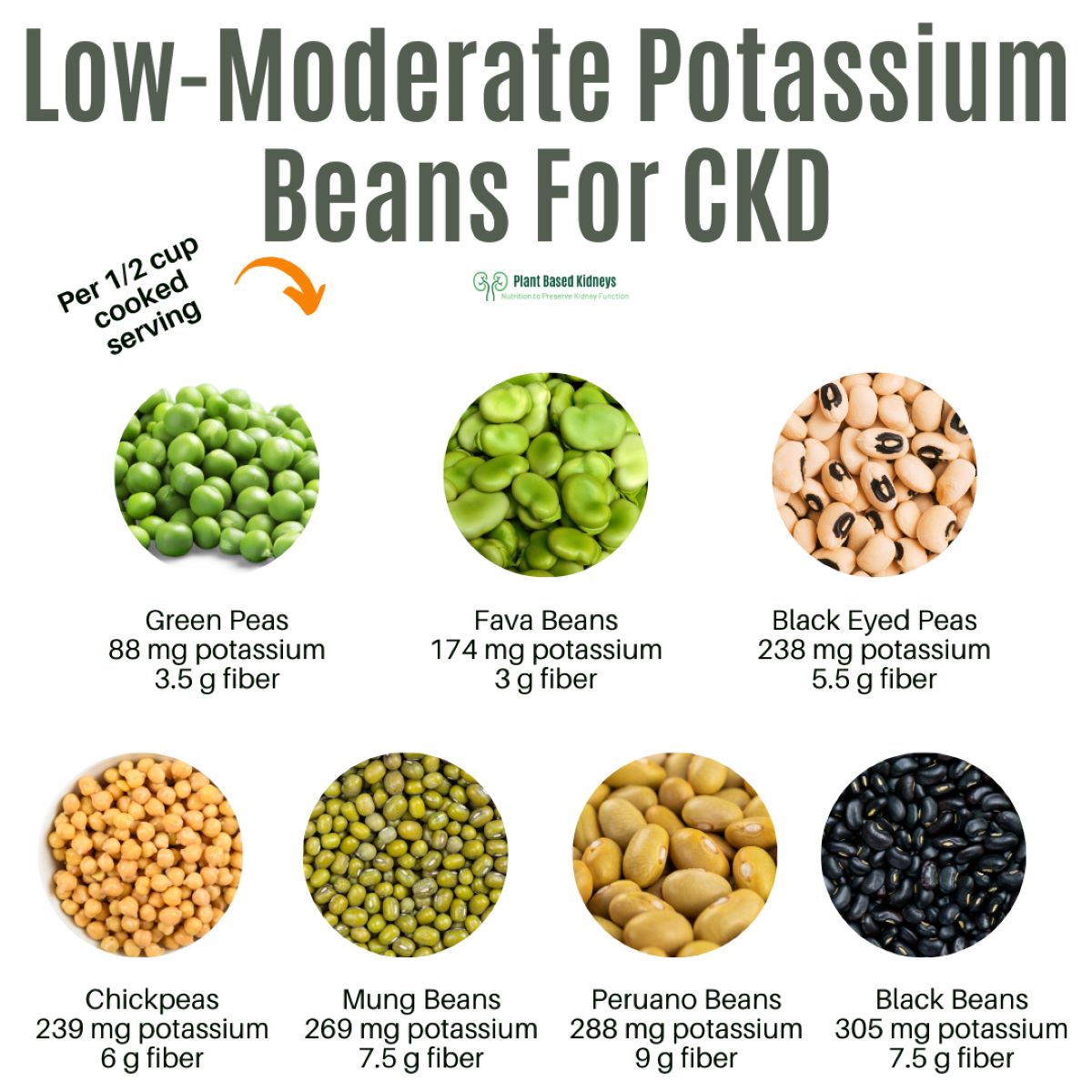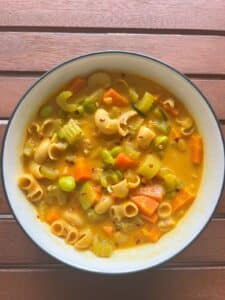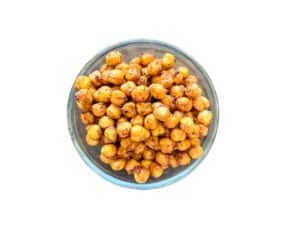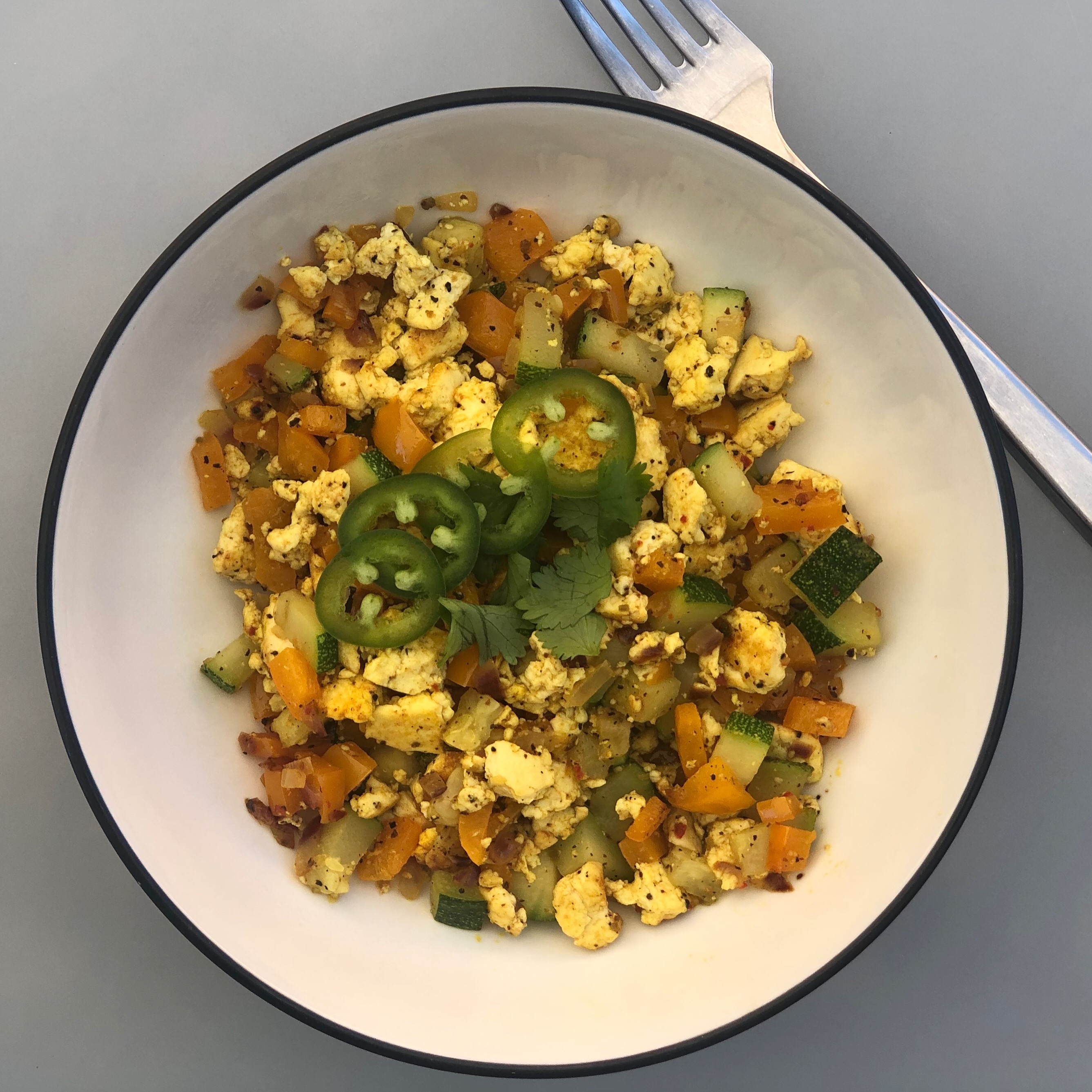Can you eat beans if you have kidney disease?
The short answer is…YES! You can eat beans if you have kidney disease and here’s what you need to know!
Beans and legumes are healthy and kidney protective. Additionally, they are a great source of fiber and plant protein for the kidneys.
People with kidney disease receive a lot of misinformation about beans because of their potassium and phosphorus content.
Let’s dive into the specifics so that you learn which beans to eat for your kidney health! If you prefer to watch vs read, you can watch this episode below!
Phosphorus in beans
Most beans are a great source of phosphorus which is why people with CKD are told to limit or avoid eating beans. The good news is that the phosphorus in beans is not fully absorbed. Only ~30-50% of the phosphorus in whole, plant foods (like beans) is actually absorbed.
For example, if you eat ½ cup of pinto beans containing 126 mg of phosphorus, 38-63 mg will actually be absorbed. Basically, you don’t need to worry about the phosphorus content of beans! If someone is telling you that you can’t eat beans because they are high in phosphorus, you are getting old and outdated renal diet advice!
For more info on phosphorus and how it is absorbed, check out my blog post, “What You Must Know About Phosphorus If You Have Kidney Disease”
Potassium in beans
The next reason why beans are often on the, “do not eat list” for the renal diet is because many of them are high in potassium.
Remember that not everyone with kidney disease needs to restrict potassium. Even people instructed to follow a low potassium diet, don’t need to follow a “no potassium” diet!
While some beans are high in potassium (like adzuki beans or Great Northern beans), many beans contain lower-moderate amounts of potassium.
I want to make this list of beans for kidney disease relevant to all people with different stages of kidney disease, whether they have a potassium restriction or not. For that reason, I provide low-moderate bean options below.
Low-moderate potassium bean options
This list includes beans/legumes that are ~300 mg potassium or less per serving.

There are a lot of legumes that are in the mid 300 mg potassium range that can easily fit into a low-moderate potassium diet too. You just might need to adjust the portion based on what else you consume. Some of these options are; kidney beans, pinto beans, and lentils.
How to add beans to your renal diet
If you don’t typically eat beans, you want to add them to your diet slowly and in small amounts. They are packed with fiber and if you suddenly start eating a lot of them, you may become bloated and gassy.
Don’t blame the beans! You just need to exercise your gut to tolerate more fiber.
Start by adding 1-2 Tablespoons to your salad, bowl, or wrap and increase over a few weeks. Make sure you drink enough water as you add more fiber to your diet.
Beans are so versatile and you can use them in so many different ways! Use them to make plant based burger patties, meat balls, falafel, and meaty sauces for pasta.
You can also blend them to make a hummus like paste to spread on a sandwich or wrap.
You can change the texture by roasting them in the oven or air fryer so that they become crispy. Try my Crispy Chickpea recipe. They are great to add to a salad for some crunch!
Beans can also be added to soups, salads, stir fry dishes, and bowls.
The options are endless and they should definitely be a part of your kidney friendly and kidney protective diet!
Can you use canned beans?
Yes, 100%! Canned beans are actually lower in potassium compared to beans cooked from dry because more is lost in the canning process.
If you are using canned beans, keep these three things in mind!
- Find a low sodium option. The sodium should be 140 mg or less per serving.
- Drain and rinse the beans before you use them. This removes ~50% of the sodium.
- Check the ingredient list and make sure your low sodium canned beans don’t contain any potassium chloride. Potassium chloride is a salt substitute and adds more absorbable potassium to your diet!
Beans for kidney health
By now you should feel confident that beans can be part of a kidney friendly renal diet!
If you need to limit your potassium intake, choose lower potassium beans (like I listed above) and consume a portion that meets your individual needs.
If you aren’t sure what your nutrient needs are, my Comprehensive Kidney Diet Guide will help you calculate your needs. This guide also provides kidney specific nutrition information for over 300 plant foods (including beans). And it teaches you how to put meals together that are tasty and protect kidney function!
That way you know what and how to eat to protect your kidney health! You can get more information on the guide here.






